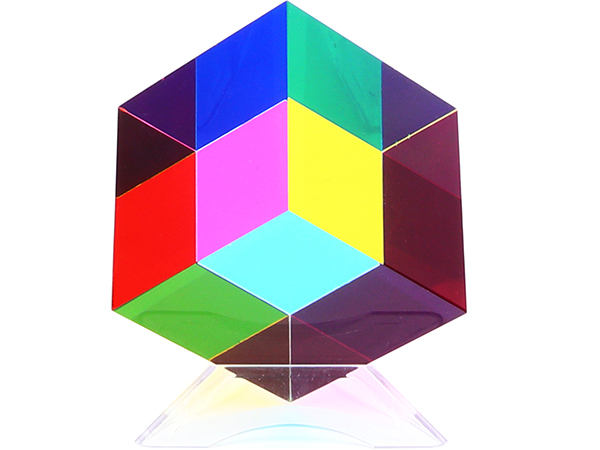Which of the Following is Not an Additive Color Used by a Monitor : Unveiling the Color Mystery
The additive color not used by a monitor is yellow. Monitors primarily use red, green, and blue as their additive colors.
Monitors, televisions, phones, and computer screens rely on the additive color model to display colors accurately. Understanding this color model is crucial in comprehending how light produces the vibrant hues we see on our screens. The additive color model involves mixing different primary colors, and certain combinations create a wide array of colors.
While monitors utilize red, green, and blue as their additive colors, there is one primary color that is not used in this color model. We will identify which color is not an additive color used by a monitor and explore the significance of the additive color model in the world of technology.
Unveiling Color Mysteries In Monitors
A monitor does not use yellow as an additive color. Monitors primarily use red, green, and blue (RGB) as their additive colors to create a wide range of colors. Yellow can be created by combining green and red light.
The Essence Of Additive Color Models In Technology
One of the fascinating mysteries of color lies in the realm of monitors. Have you ever wondered how colors are produced in screens? Why do computer screens use red, green, and blue as their primary colors instead of the traditional red, yellow, and blue? This is where we delve into the enigmatic world of additive color models. In order to truly understand the concept, it is crucial to distinguish between additive and subtractive color systems.Distinguishing Between Additive And Subtractive Color Systems
When it comes to color representation in technology, there are two primary systems: additive and subtractive. Understanding their differences is key to unraveling the secrets of color in monitors. Additive color models, as the name suggests, involve the process of adding light to produce different hues. This model is used in cameras, televisions, phones, and computer monitors. The underlying principle is that colors are created by combining three primary colors: red, green, and blue (RGB). By varying the intensity of these three colors, a wide range of shades and hues can be achieved. On the other hand, subtractive color systems are used in printing and mixing physical pigments. In this model, colors are obtained by subtracting specific wavelengths of light. The primary colors in subtractive systems are cyan, magenta, and yellow (CMY), with black (K) often added for improved contrast. When these pigments are mixed together, certain wavelengths of light are absorbed, resulting in the perception of different colors. Interestingly, monitors employ additive color models because they are emissive devices. This means that they emit their own light, unlike printed materials which rely on reflected light. By using the RGB color model, monitors are able to create a wide spectrum of vibrant colors that captivate our eyes. In conclusion, the use of additive colors is a fundamental aspect of technology, particularly in the realm of monitors. Understanding the distinction between additive and subtractive color systems sheds light on the captivating world of color representation in screens. So next time you marvel at the vivid hues on your computer monitor, remember that it’s all thanks to the additive color model and the magic of red, green, and blue.
Credit: www.sltrib.com
Additive Colors In Technology
A computer monitor uses the additive color model, which consists of red, green, and blue primary colors, to reproduce a wide range of colors. Yellow is not an additive color used by a monitor.
Understanding How Monitors Use Light To Create Colors
In the world of technology, monitors play a significant role in displaying vibrant and lifelike colors. But have you ever wondered how exactly monitors are able to create such a wide range of hues? The answer lies in understanding the concept of additive colors.
The Primary Colors Of Light: Red, Green, And Blue (rgb)
Monitors utilize the RGB color model to produce a full spectrum of colors. RGB stands for Red, Green, and Blue – three primary colors of light that, when combined in various intensities, form the basis for creating any color on your screen.
Unlike conventional painting or printing, where the primary colors are red, yellow, and blue, monitors use red, green, and blue as their primary colors. This choice is based on the fact that the human eye is more sensitive to the wavelengths of light corresponding to red, green, and blue. By manipulating the intensity of these three colors, monitors can trick our eyes into perceiving a vast array of colors.
So, how do monitors mix these primary colors to create other shades? For each pixel on the screen, the monitor emits a combination of red, green, and blue lights at different intensities. By varying the intensities of these three colors, the monitor can create millions of unique shades and reproduce images with remarkable precision.
It’s important to note that monitors are emissive devices, meaning they emit light to create colors. This is in contrast to other color systems, such as subtractive color models used in printing, where colors are created by selectively absorbing certain wavelengths of light.
In conclusion, the additive color model used by monitors revolutionizes how we perceive colors in the digital world. By understanding how monitors use light and the primary colors of light – red, green, and blue – we can appreciate the incredible technology behind the vibrant displays we interact with every day.
The Additive Color Mystery
The additive color model used by monitors consists of red, green, and blue. Yellow, on the other hand, is not an additive color used by monitors.
When it comes to digital displays, color is an essential factor that determines the overall viewing experience. Whether it’s a monitor, television, or a phone screen, these devices rely on the additive color model to produce vibrant and diverse hues. But have you ever wondered which colors are actually used in this process? In this article, we will explore the additive color mystery and specifically answer the question: Which of the following is not an additive color used by a monitor?
Which Of The Following Is Not An Additive Color Used By A Monitor?
To fully grasp the concept of additive colors, it’s important to clarify the basic principles of the additive color model. Additive color mixing involves combining lights of different wavelengths to create new colors. In this model, the three primary colors used are red, green, and blue – commonly referred to as RGB.
While red, green, and blue are the primary additive colors, yellow is not. Unlike painting or subtractive color models, where red, yellow, and blue are the primary colors, monitors and digital displays utilize red, green, and blue as their primary colors. This is because the RGB system allows for a wider range of colors and better accuracy when it comes to reproducing images and videos.
So, in essence, yellow is not an additive color used by a monitor.
Color Perception And Cones
The additive colors used by a monitor are red, green, and blue. Yellow is not an additive color used by a monitor.
The Role Of Human Vision In Color Differentiation
The perception of color in humans is heavily influenced by the presence of specialized cells in our eyes called cones. These cones are responsible for detecting and differentiating different colors by responding to specific wavelengths of light. The human eye contains three types of cones: the red cones, the green cones, and the blue cones. Each cone is sensitive to a specific range of wavelengths, allowing us to perceive a wide spectrum of colors. The combination and stimulation of these cones enable us to perceive different colors, shades, and hues.How Monitors Cater To Trichromatic Vision With Rgb
To cater to our trichromatic vision, monitors use a color model called RGB, which stands for Red, Green, and Blue. This model mimics the functioning of our cones by emitting light in three primary colors – red, green, and blue. By varying the intensity of these primary colors, monitors are able to create a wide range of colors that closely resemble what we perceive in the real world. The RGB color model follows the additive color mixing technique, where the three primary colors are combined in varying proportions to produce different colors. When all three primary colors are displayed at their maximum intensity, which is 255 in the digital world, they create white light. Conversely, when all three primary colors are absent or at their minimum intensity of 0, they create black. The use of the RGB color model in monitors ensures that the colors displayed align with our trichromatic vision. By emitting light in specific proportions of red, green, and blue, monitors are able to stimulate our cones in a way that allows us to perceive a wide range of colors on the screen. In conclusion, monitors cater to our trichromatic vision by utilizing the RGB color model, which emits light in the primary colors of red, green, and blue. This model mimics the functioning of our cones, enabling us to perceive a wide range of colors on the screen.Technological Implications Of Color Models
Monitors do not use the subtractive color model. Instead, they use the additive color model, which combines red, green, and blue light to produce colors on the screen.
Color is an integral part of our everyday lives, especially in the realm of technology. Cameras, televisions, phones, and computer monitors all rely on the concept of color models to produce vibrant and lifelike images. In the world of monitors, specifically, the additive color model is the key player. This model describes how light produces color, making it ideal for emissive devices like computer monitors. However, it’s crucial to understand the implications of using this model and the pivotal shift in design choices it brings.
Impacts Of Using Subtractive Color Models In Monitors
Traditionally, subtractive color models have been used for applications such as printing and painting. These models involve the combination of pigments, which absorb certain wavelengths of light to create the desired colors. While subtractive colors have their merits in physical mediums, they do not fare well when it comes to computer monitors.
Implementing subtractive color models in monitors would result in several significant drawbacks. Firstly, subtractive color models rely on a limited range of predefined colors. This limitation restricts the ability to accurately reproduce the expansive color gamut that additive color models offer. With subtractive models, the visual experience would be compromised, as some shades and hues may appear washed out or inaccurate.
Moreover, subtractive color models require precise ink or pigment application to achieve accurate color rendering. Any inconsistencies during the printing or painting process can lead to inconsistencies in the final product. In contrast, additive color models used in monitors offer greater control and precision, ensuring consistent and predictable color reproduction.
Another crucial factor to consider is the efficiency of light transmission. Subtractive color models require a light source to illuminate the printed or painted medium, which may result in energy loss and reduced brightness. On the other hand, additive color models used by monitors capitalize on the innate brightness of the display technology, resulting in vibrant and vivid images without energy wastage.
In conclusion, the technological implications of color models in monitors are clear. The shift towards additive color models has revolutionized the way we experience and interact with visual content. By leveraging the power of additive colors, monitors can provide a more accurate, vibrant, and energy-efficient display. This shift not only enhances the user experience but also opens up new possibilities for creativity and design in the digital realm.
The Non-additive Outlier
In the world of digital displays, additive color models are the norm. Cameras, televisions, phones, and computer monitors all rely on the additive color model to produce vibrant and accurate colors. However, amidst the three primary additive colors – red, green, and blue – there is one color that stands out as the non-additive outlier. Can you guess which color it is?
Identifying The Subtractive Color Erroneously Linked To Monitors
Contrary to popular belief, the subtractive color erroneously linked to monitors is yellow. While we often associate yellow with primary colors in other contexts, such as painting, it is not part of the additive color spectrum used by monitors. Instead, monitors rely solely on the combination of red, green, and blue to create a wide range of colors.
So why isn’t yellow a primary additive color for monitors? The answer lies in the underlying principles of additive color mixing. By combining different intensities of red, green, and blue light, monitors are able to produce a vast gamut of colors that closely match what the human eye perceives. These three primary colors work together to create a full spectrum of hues, including secondary and tertiary colors.
Why Certain Colors Are Not In The Additive Spectrum For Digital Displays
The absence of certain colors, like yellow, in the additive spectrum for digital displays can be attributed to the way our eyes perceive light. While our eyes have three types of color receptors, called cones, each sensitive to a different range of light wavelengths, they are not evenly spaced. The wavelengths that activate the red, green, and blue cones are spread out in a way that allows us to perceive a wide range of colors using just these three primary colors.
Yellow, on the other hand, falls between the red and green wavelengths. Since both red and green cones are already being stimulated to create the color yellow, it is unnecessary to include it as a primary additive color. By combining appropriate intensities of red and green light, our eyes perceive yellow. This clever optimization allows monitors to display a near-infinite number of colors without the need for an additional primary color.
So the next time you look at a monitor, remember that yellow may be missing from its additive color palette. Yet, thanks to the power of additive color mixing, the screen is still capable of displaying a vibrant spectrum of hues, bringing your digital content to life.
Frequently Asked Questions For Which Of The Following Is Not An Additive Color Used By A Monitor
What Are The Additive Colors Used By A Monitor?
A monitor uses the additive colors red, green, and blue (RGB) to produce color.
Is Rgb An Additive Color?
Yes, RGB is an additive color model used by monitors. It combines red, green, and blue primary colors of light to create a wide range of colors.
Is Cmyk Subtractive Or Additive?
CMYK is a subtractive color model used in printing. It stands for Cyan, Magenta, Yellow, and Key (or black) and is not an additive color model like RGB.
What Are The Three Additive Primary Colors?
The three additive primary colors used by a monitor are red, green, and blue (RGB).
Conclusion
Based on the information gathered, it is clear that the color yellow is not an additive color used by a monitor. Monitors, televisions, and other devices use the additive color model, which consists of red, green, and blue. While yellow can be created by combining red and green light, it is not considered a primary additive color.
Understanding the difference between additive and subtractive colors is crucial when it comes to creating and displaying accurate color representations on electronic devices.





